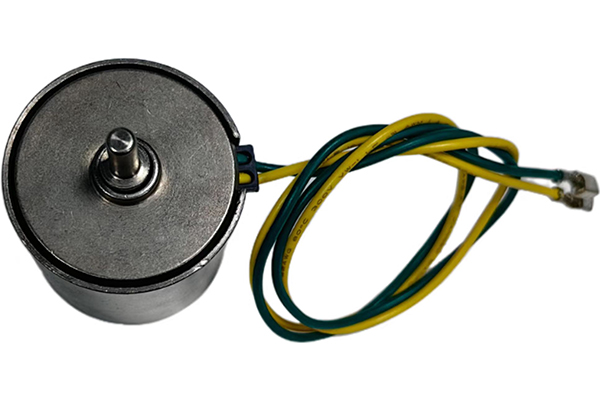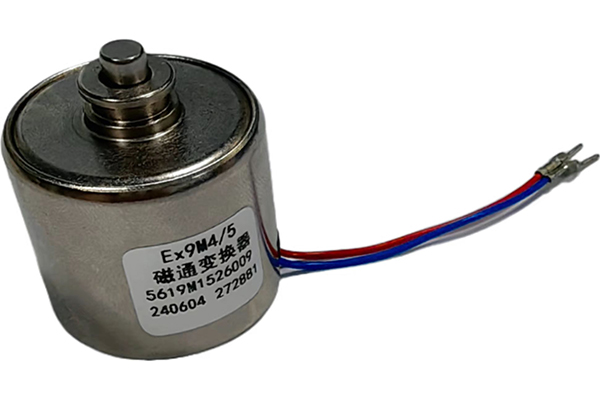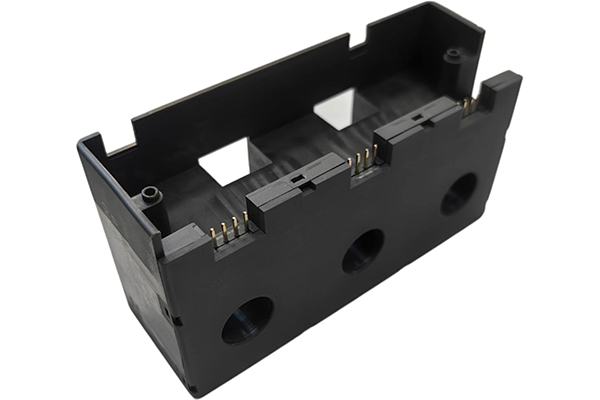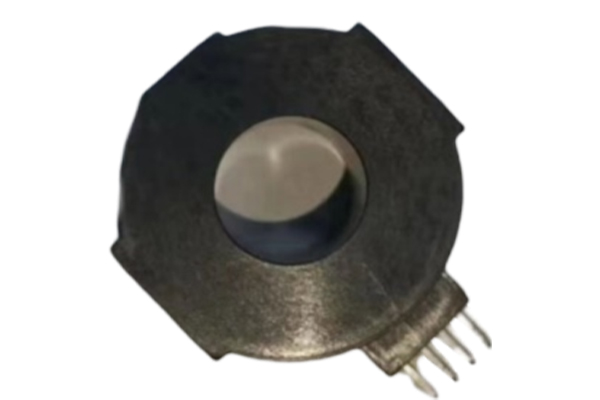How does a measuring transformer ensure current measurement?
Release Time : 2025-07-28
In modern power systems, accurate current measurement is essential for the safe operation and efficient management of the power grid. As a key device, the measuring transformer plays an important role in ensuring the accuracy of current measurement.
1. Application of high-precision sensors
In order to achieve high-precision current measurement, measuring transformers are usually equipped with advanced sensors. These sensors can not only capture small current changes, but also maintain stable performance under various environmental conditions. For example, the use of Hall effect sensors or magnetoresistive sensors can significantly improve the resolution and linearity of current measurement. Such sensors can provide accurate readings over a wide dynamic range and have high immunity to temperature changes and other external interference. In addition, high-precision sensors also support self-calibration functions, which further enhances the reliability of measurements.
2. Intelligent data processing and analysis
Modern measuring transformers are equipped with powerful data processing units that can collect, process and analyze current data in real time. Through built-in algorithms, these devices can automatically filter out noise, compensate for nonlinear errors, and perform data smoothing. This intelligent data processing capability not only improves measurement accuracy, but also provides users with more intuitive and detailed current waveform information. For example, some high-end measuring transformers have spectrum analysis capabilities that can identify harmonic components in current, which is very useful for diagnosing power quality problems in the power grid.
3. Strict manufacturing process and quality control
In order to ensure the high accuracy of current measurement, measuring transformers use strict manufacturing processes and quality control measures during production. Each component is precisely processed and strictly screened to ensure that its dimensional tolerances and electrical characteristics meet the design requirements. For example, the selection and processing of core materials is one of the key factors affecting measurement accuracy. High-quality silicon steel sheets or amorphous alloy materials are widely used in core manufacturing to reduce hysteresis loss and eddy current loss. In addition, automated assembly technology and dust-free workshop environments are used in the manufacturing process to minimize human errors and pollution sources.
4. Multi-layer protection and environmental adaptability
The measuring transformer needs to operate stably for a long time in various complex environments, so its protection measures and environmental adaptability are also important factors to ensure the accuracy of current measurement. The shell design usually uses high-strength, corrosion-resistant materials and has good sealing properties to prevent external pollutants such as moisture and dust from entering the internal circuit. At the same time, the device is also equipped with overvoltage protection, overcurrent protection and temperature monitoring devices to ensure that the power supply can be cut off in time under abnormal circumstances to avoid damage. In addition, some high-end products also have shockproof functions and can work normally in earthquakes or other vibration environments.
5. Modular design and scalability
In order to meet the needs of different application scenarios, the measuring transformer adopts a modular design concept. Users can choose a suitable module combination according to actual needs, such as voltage input module, current output module, communication interface module, etc. This flexible design not only improves the applicability of the equipment, but also provides convenience for future upgrades and expansions. For example, in the construction of smart grids, the measuring transformer can achieve seamless docking with the SCADA system by adding a communication module, transmitting current data in real time, and facilitating remote monitoring and fault diagnosis.
6. Regular calibration and maintenance services
Although the measuring transformer has been strictly tested and calibrated before leaving the factory, its measurement accuracy may decrease during long-term use due to factors such as environmental changes and equipment aging. Therefore, regular calibration and maintenance are important means to ensure the accuracy of current measurement. Manufacturers usually provide professional calibration services, using standard sources to fully detect and adjust the equipment to restore its original accuracy. In addition, users can also perform simple daily maintenance according to the operating manual, such as cleaning the casing, checking the connection points, etc., to extend the service life of the equipment.
7. Rich interfaces and compatibility
In order to facilitate integration into the existing power system, measuring transformers are usually equipped with a variety of communication interfaces, such as RS485, Modbus, Profibus, etc., to support data exchange with other devices. This high compatibility enables measuring transformers to be easily integrated into the automation control system to achieve data sharing and collaborative work. For example, in a distributed power generation system, measuring transformers can upload current data to the cloud platform through a wireless communication module for engineers to remotely monitor and analyze. This not only improves work efficiency, but also provides strong support for troubleshooting.
In summary, measuring transformers effectively ensure the accuracy of current measurement through the application of high-precision sensors, intelligent data processing and analysis, strict manufacturing processes and quality control, multi-layer protection and environmental adaptability, modular design and scalability, regular calibration and maintenance services, and rich interfaces and compatibility. Whether under normal working conditions or facing complex environmental challenges, measuring transformers can provide stable and reliable current data to safeguard the safe operation of the power system.
1. Application of high-precision sensors
In order to achieve high-precision current measurement, measuring transformers are usually equipped with advanced sensors. These sensors can not only capture small current changes, but also maintain stable performance under various environmental conditions. For example, the use of Hall effect sensors or magnetoresistive sensors can significantly improve the resolution and linearity of current measurement. Such sensors can provide accurate readings over a wide dynamic range and have high immunity to temperature changes and other external interference. In addition, high-precision sensors also support self-calibration functions, which further enhances the reliability of measurements.
2. Intelligent data processing and analysis
Modern measuring transformers are equipped with powerful data processing units that can collect, process and analyze current data in real time. Through built-in algorithms, these devices can automatically filter out noise, compensate for nonlinear errors, and perform data smoothing. This intelligent data processing capability not only improves measurement accuracy, but also provides users with more intuitive and detailed current waveform information. For example, some high-end measuring transformers have spectrum analysis capabilities that can identify harmonic components in current, which is very useful for diagnosing power quality problems in the power grid.
3. Strict manufacturing process and quality control
In order to ensure the high accuracy of current measurement, measuring transformers use strict manufacturing processes and quality control measures during production. Each component is precisely processed and strictly screened to ensure that its dimensional tolerances and electrical characteristics meet the design requirements. For example, the selection and processing of core materials is one of the key factors affecting measurement accuracy. High-quality silicon steel sheets or amorphous alloy materials are widely used in core manufacturing to reduce hysteresis loss and eddy current loss. In addition, automated assembly technology and dust-free workshop environments are used in the manufacturing process to minimize human errors and pollution sources.
4. Multi-layer protection and environmental adaptability
The measuring transformer needs to operate stably for a long time in various complex environments, so its protection measures and environmental adaptability are also important factors to ensure the accuracy of current measurement. The shell design usually uses high-strength, corrosion-resistant materials and has good sealing properties to prevent external pollutants such as moisture and dust from entering the internal circuit. At the same time, the device is also equipped with overvoltage protection, overcurrent protection and temperature monitoring devices to ensure that the power supply can be cut off in time under abnormal circumstances to avoid damage. In addition, some high-end products also have shockproof functions and can work normally in earthquakes or other vibration environments.
5. Modular design and scalability
In order to meet the needs of different application scenarios, the measuring transformer adopts a modular design concept. Users can choose a suitable module combination according to actual needs, such as voltage input module, current output module, communication interface module, etc. This flexible design not only improves the applicability of the equipment, but also provides convenience for future upgrades and expansions. For example, in the construction of smart grids, the measuring transformer can achieve seamless docking with the SCADA system by adding a communication module, transmitting current data in real time, and facilitating remote monitoring and fault diagnosis.
6. Regular calibration and maintenance services
Although the measuring transformer has been strictly tested and calibrated before leaving the factory, its measurement accuracy may decrease during long-term use due to factors such as environmental changes and equipment aging. Therefore, regular calibration and maintenance are important means to ensure the accuracy of current measurement. Manufacturers usually provide professional calibration services, using standard sources to fully detect and adjust the equipment to restore its original accuracy. In addition, users can also perform simple daily maintenance according to the operating manual, such as cleaning the casing, checking the connection points, etc., to extend the service life of the equipment.
7. Rich interfaces and compatibility
In order to facilitate integration into the existing power system, measuring transformers are usually equipped with a variety of communication interfaces, such as RS485, Modbus, Profibus, etc., to support data exchange with other devices. This high compatibility enables measuring transformers to be easily integrated into the automation control system to achieve data sharing and collaborative work. For example, in a distributed power generation system, measuring transformers can upload current data to the cloud platform through a wireless communication module for engineers to remotely monitor and analyze. This not only improves work efficiency, but also provides strong support for troubleshooting.
In summary, measuring transformers effectively ensure the accuracy of current measurement through the application of high-precision sensors, intelligent data processing and analysis, strict manufacturing processes and quality control, multi-layer protection and environmental adaptability, modular design and scalability, regular calibration and maintenance services, and rich interfaces and compatibility. Whether under normal working conditions or facing complex environmental challenges, measuring transformers can provide stable and reliable current data to safeguard the safe operation of the power system.







